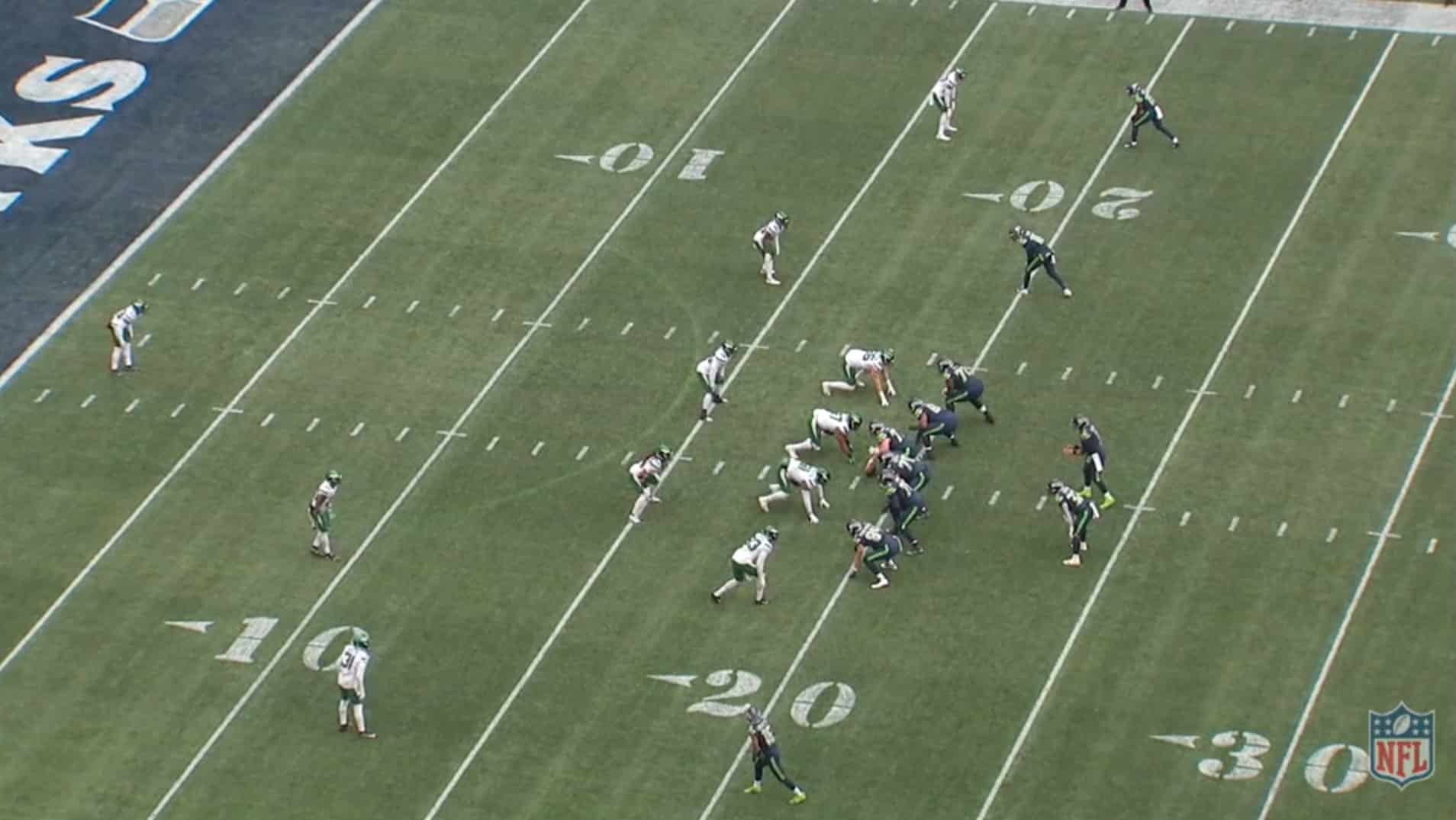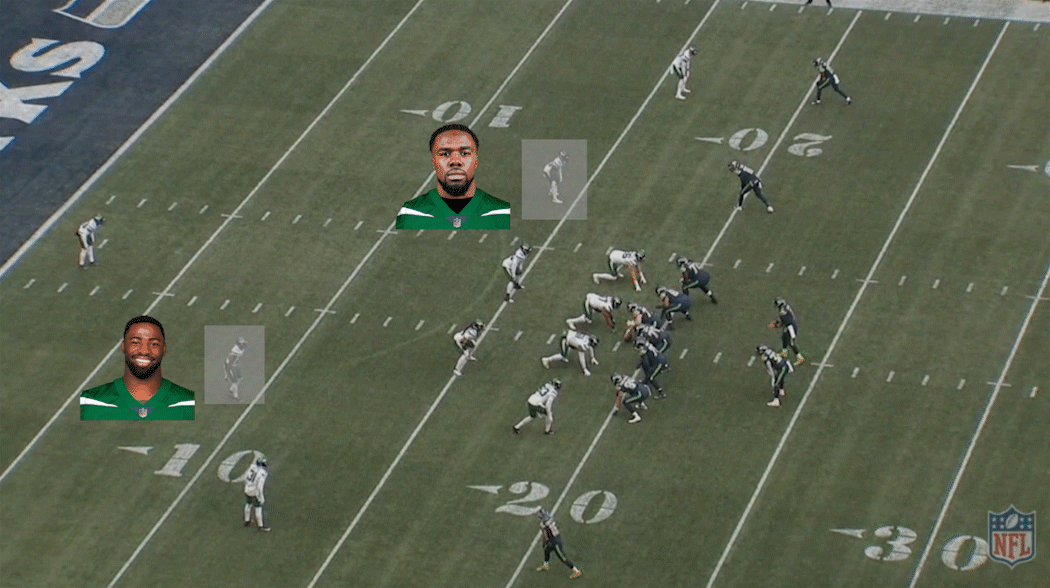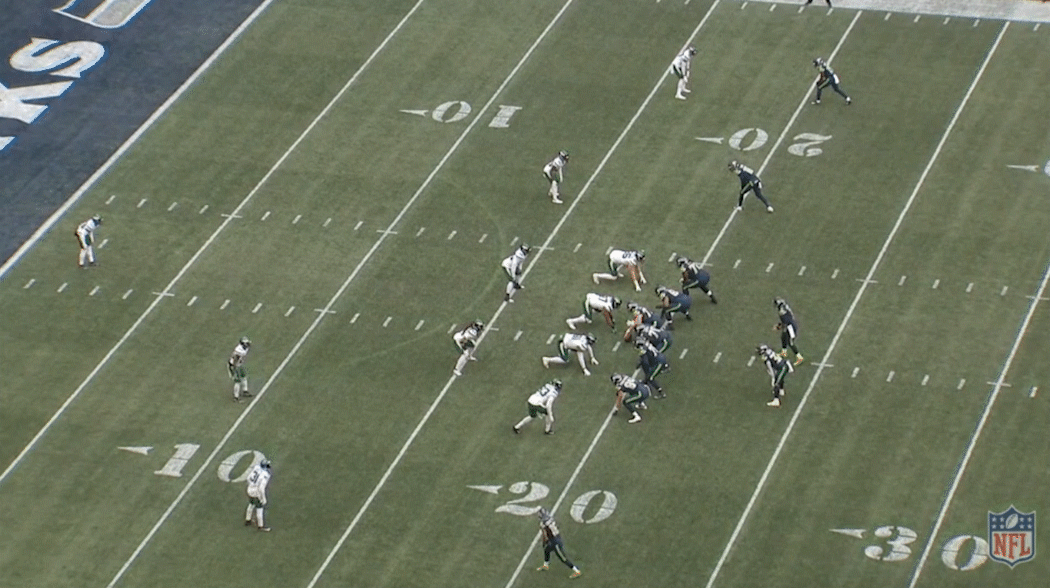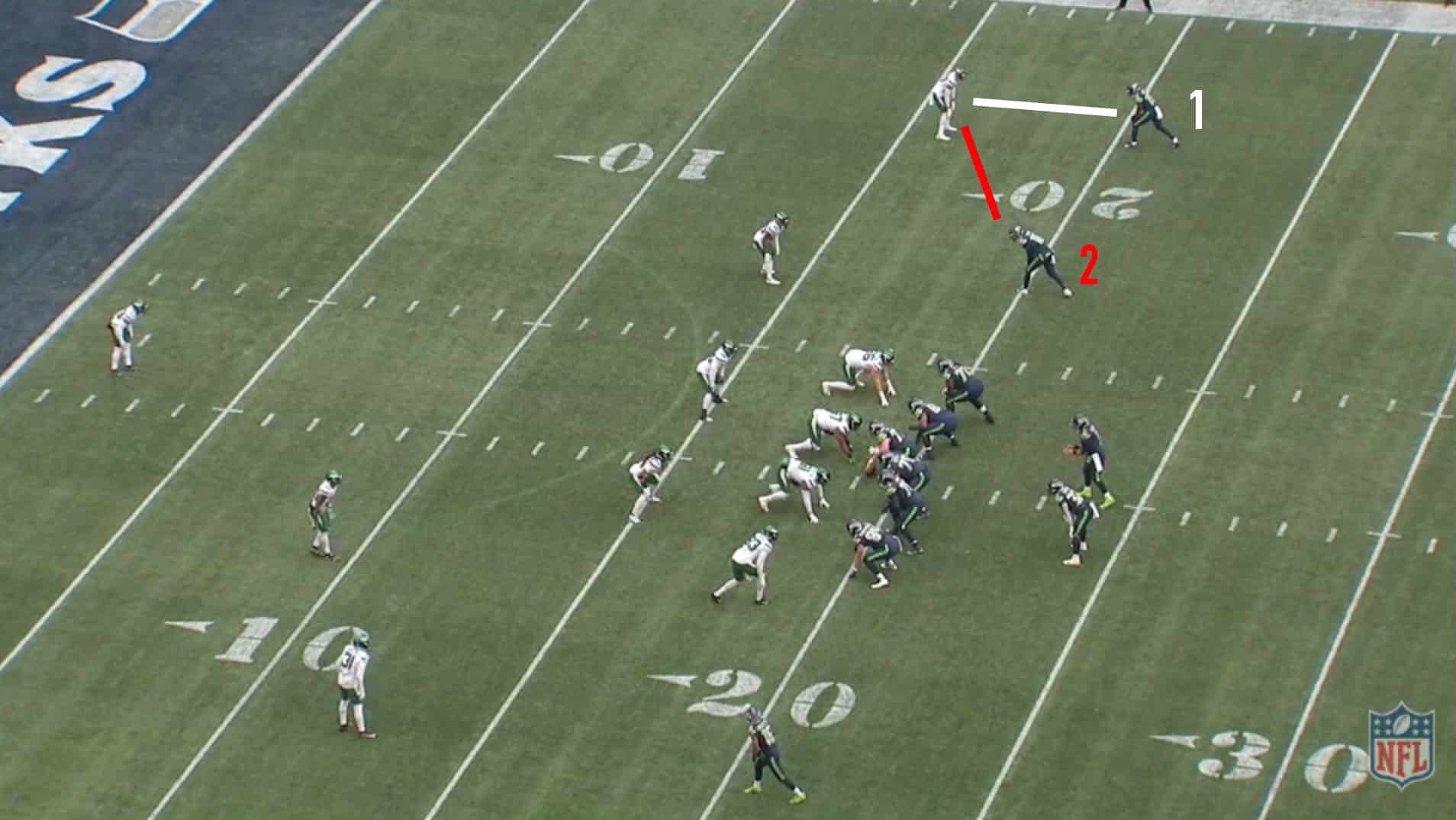The New York Jets defense was hurt yet again by the lack of pattern matching, this time against Russell Wilson‘s Seattle Seahawks.
It’s all about the offense. From Sam Darnold to Adam Gase, to any one of the potential head coaches in 2021 and beyond, offense is all anybody associated with the New York Jets wants to discuss.
Understandably so. The league’s crackdown on defensive back contact about 15 years ago has led to an offensive onslaught that continues to increase each NFL week. Plus, the fact that the Jets’ current head coach is an offensive mind who was supposed to develop young Darnold doesn’t help promote defensive discussion.
Yet, the Jets defense is every bit behind today’s concepts as the offense is.
Gregg Williams is an old-school defensive dude. Entering the league with the Houston Oilers in the early 1990s, the man has adapted to the times somewhat but lags behind in many areas.
One such area deals with his zone coverages. Instead of implementing a pattern-match scheme that allows for more on-the-fly flexibility, Williams mainly relies on spot-dropping. Combine that with his usual hyperactivity in the area of coverage disguise, and the Jets defense often finds itself in serious trouble.
Obviously, Williams is no longer the team’s defensive coordinator. Although Frank Bush now holds down that position, there’s no changing the stripes of a unit that’s played one way for the better part of two seasons over the course of just a week.
The Jets’ lack of pattern matching on the Seattle Seahawks’ first touchdown this past Sunday provides a clear example.
The situation
- First-and-10
- At the Jets’ 19-yard line
- 7:22 remaining in the first quarter
- 3-0 Jets lead
Seattle comes out in a 2 by 2 gun look with the running back lined up on the boundary side, forcing the strength of the offense to the very same side. New York counters with nickel personnel behind a four-man front.
The pre-snap look provides a single-high and off-coverage across the balanced weapons.
The routes and coverage
Bush dials up a Williams favorite: a variation of an inverted Tampa 2 coverage that, in essence, plays 3-high. The kicker is that the two slot defensive backs are responsible for the two outer-thirds, while the single-high safety takes the middle-third.
The coverage can be labeled as many different things. What’s important is the idea that the Jets are playing a 3-high look.
The offensive play is simple: four verts.
The reason pattern matching came to be was to deal with situations just like this. Why play 3-deep when four verts outnumber the deep coverage four to three? There’s no point in it if the numbers aren’t there.
Pattern matching allows for a combination of man and zone. Responsibilities or reads is the critical factor when pattern matching, as opposed to strictly thinking man or zone.
The play
There’s always a price to pay in football. If an offensive play-caller wants five in the pattern, that’ll leave the pass protection vulnerable. If a defensive play-caller wants to disguise a coverage, that’ll put defenders in a tougher spot when playing the pass.
Javelin Guidry (top, field-side) and Marcus Maye (bottom, boundary-side) are the inside defensive backs on this play. Watch both players’ after the snap closely.
Each player bolts to his respective deep-third zone (wider deep-half zone if you consider this an inverted Tampa 2 variation). Maye, closest to us, is fine. He shuffles and keeps his eyes in the appropriate spot. Guidry, however, is lined up so close to the line of scrimmage that he has to completely turn his hips and his head to get there.
This puts Guidry in a terrible spot.
More importantly, if the Jets were pattern matching, the single-high safety (Arthur Maulet in this instance) wouldn’t be forced to deal with two open seams.
If we consider this a 2-deep look with the single-high safety in a deep-hole zone (robber, even), then Guidry and Maye are the 2-deep players, while Bryce Hall and Blessuan Austin are the curl-flat defenders (hard corners).
In that scenario, if the Jets used pattern matching, Guidry and Maye would lock on to the slot receiver and tight end, respectively, as their first reads. The two outside threats would be their secondary reads. Conversely, Hall and Austin would read the outside threats first, while thinking about the slot weapon and tight end second, respectively.
Let’s break down on a half-field (field side, top). Guidry (deep-half) would read the slot receiver as No. 1 and the outside receiver as No. 2.
Meanwhile, Hall would read it the opposite way.
Each player would defend his initial read and carry it unless or until his second read threatens his area. So for Guidry, if his initial read runs a flat route, he’d scream “flat” to Hall and continue getting depth while keying in on his No. 2 read, the outside receiver.
If Hall’s initial read happens to run a drag, he’d yell “under” to alert Guidry and the second-level linebackers that a route is coming in their direction. Hall would then key on his No. 2 read, the slot receiver, to see what he’s up to while also getting depth.
In the event the offense runs four verts, both Guidry and Hall would lock on to their No. 1 reads and carry it through. But since the Jets rarely pattern match, the four verts destroys this inverted zone coverage while allowing plenty of room down both seams.
The New York #Jets' lack of pattern matching comes courtesy of Gregg Williams. Obviously, the unit won't change much under Frank Bush, but this is a tremendous example of why not adapting to the idea is a killer. Matching would stop the four verts here. pic.twitter.com/JVqEO8OkUA
— Robby Sabo (@RobbySabo) December 17, 2020
The coverage is run with clear spot drops in mind, and considering the widening zones of both Maye and Guidry, having them bolt so wide essentially doubles up on the outside threats (as both corners are also in the area).
Whoever takes control of the New York Jets defense in 2021 must bring a more modern scheme to the party.









